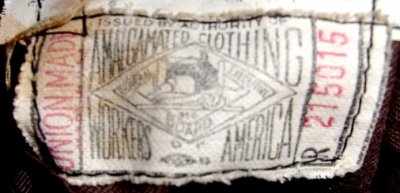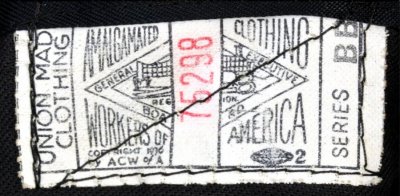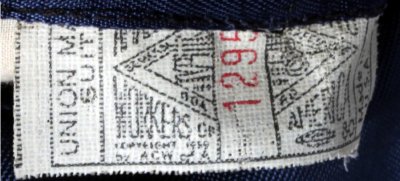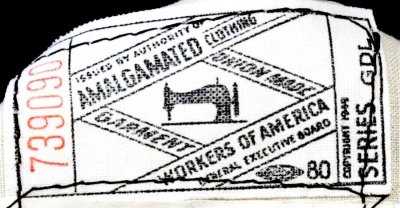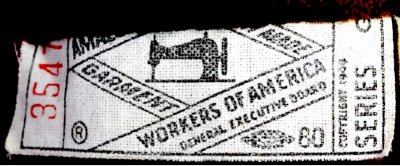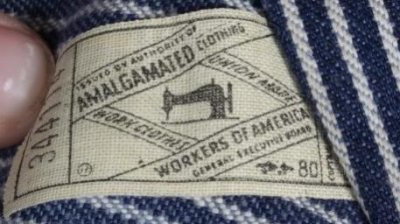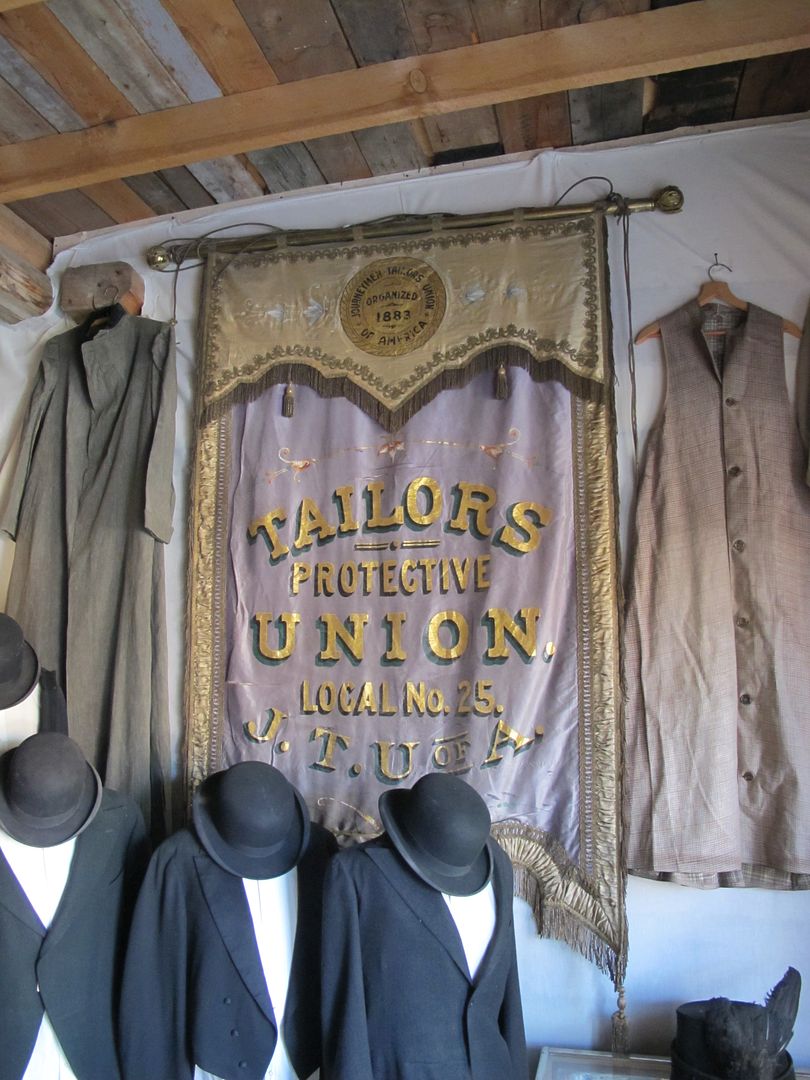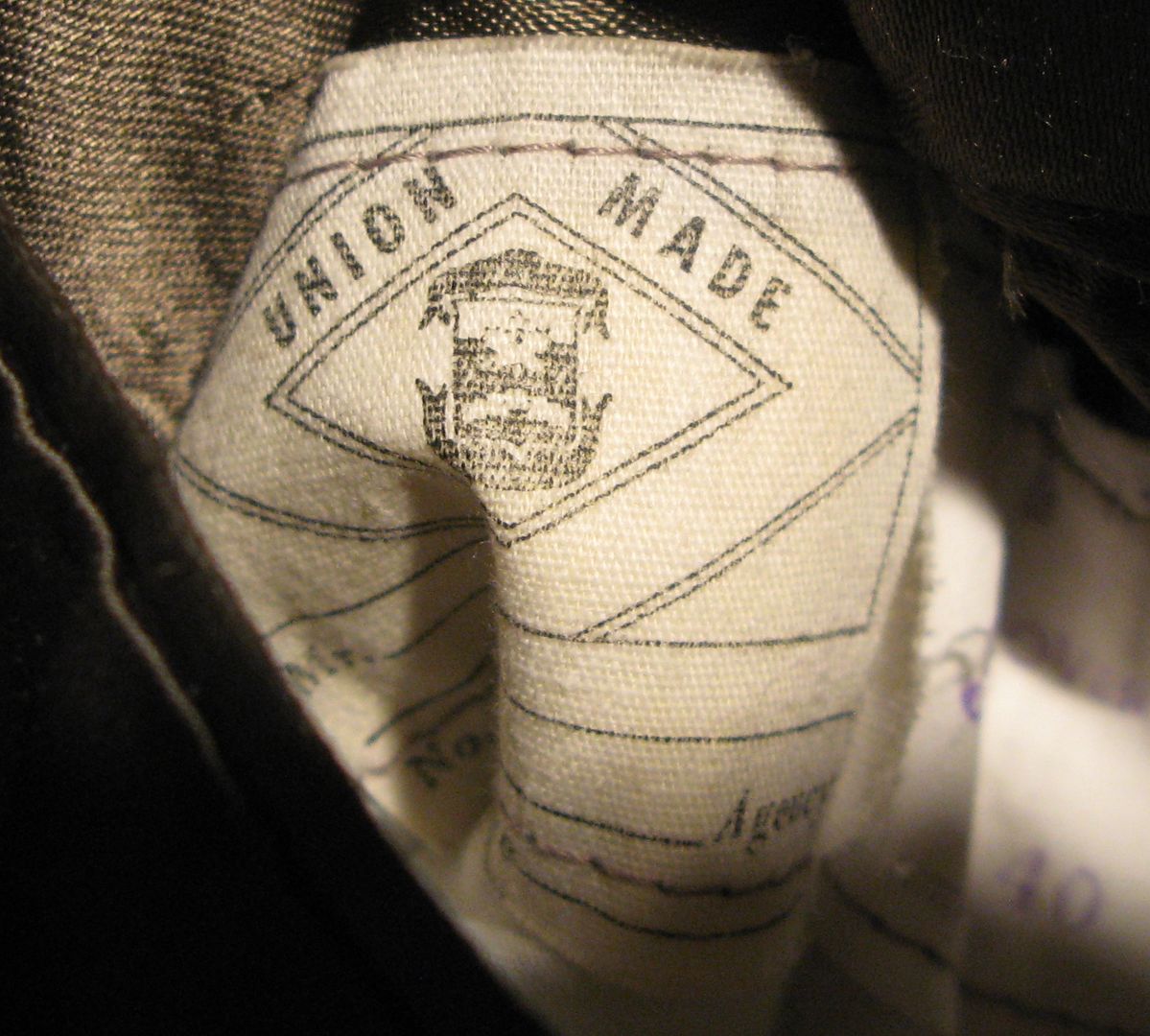- Messages
- 10,562
- Location
- Bozeman, MT
Union labels can be useful in dating vintage clothing made in the United States and in Canada. However, there are some important things to keep in mind when using them as a resource. Not all clothing makers were unionized, and not all shops which were necessarily used union tags in their products, so you will not always find one. As with any other method of dating vintage clothing, there are always quirks and exceptions which cause issues when trying to assign a precise date to a garment. There is always overlap when new batches of tags come into a tailor's. When the new 1949 ACWA union tags came into a shop, the tailor would use the rest of the roll of 1939 tags up before transitioning to the new tags. As such, sometimes earlier tags show up in later garments. There will also, almost assuredly be a number of variant tags which did not make it into this guide. Keeping this in mind, never use a union tag as the sole means of assessing the age of a garment; always use it in combination with other dating methods.
The Tailor's National Progressive Union
1885-1889
Though founded after the Journeymen Tailor's Union of America, the Tailor's National Progressive Union was the first clothing union in the United States to issue a label on union made clothes in 1887. The Progressive union had jurisdiction over unionized tailors of ready-made clothing. The union had a socialist lean and was short lived, existing only from 1885-1889. (source)
The Journeymen Tailor's Union of America
1865-1876, 1883-1920s
The Journeymen Tailor's Union of America originally organized in 1865, but dissolved in 1876 after massive embezzlement of funds by one of its officers. It re-organized in 1883, and had jurisdiction over unionized custom tailors. Its refusal to accept "less skilled" otr and mtm tailors led to the formation of the UGWA. They first issued a union label in 1891. I can not find reference to the union past c.1929. Modern history books point to 1914 as the demise of the union, but period documents and garments show it was around until at least the 1920s.
Custom Tailor's Union Label.

Custom Tailor's Union Label variant.

1920s variant

(source)
Example from 1900
The United Garment Workers of America
1891-1994
The United Garment Workers of America was formed in 1891 by ready-made tailors who the Custom Tailor's Union had refused admission. They issued a union label shortly after their organization. In 1896, the UGWA started placing their union label on factory-made made to measure clothes, which the Custom Tailor's Union felt overstepped the jurisdiction of the UGWA union, creating friction between the rival unions. They resolved that the UGWA would have jurisdiction over all non-custom union made garments. In 1994, the UGWA merged into the United Food and Commercial Workers International Union (UFCW).
The United Garment Workers of America tag remained virtually unchanged from its first usage in 1891 until its last in 1994. The most notable change occurred c.1930, when the manufacturer number relocated from the side to the center of the label. The first two label variants date from the first decade of the 20th century. The second two are representative of what was used 1930s-1990s.
Tag from 1903. Note presence of signature of Henry White, General Secretary.

Tag from 1908. Slight difference in illustration of hands. In this example, the signature is omitted, though this is likely just for the ad in which this image originally appeared.
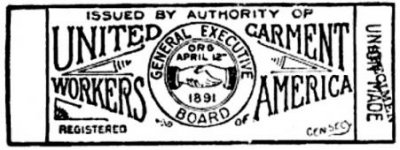
Depending on what was the tag was on, there could be different background text. Pictured is “clothing- clothing”. Other examples of background text would be “Duck Goods” or “Special Order”.
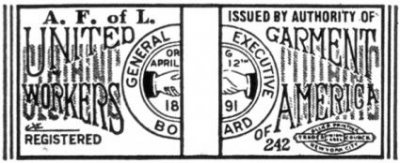
Generic variant omitting the background text, used for advertising purposes.
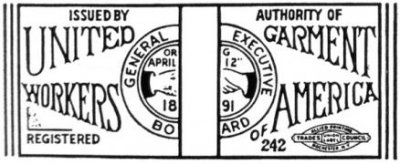
The Textile Workers Union of America
1901-1939
Merged with the Textile Workers Organizing Committee (1937-1939) to form the United Textile Workers Union of America
The Tailor's National Progressive Union
1885-1889
Though founded after the Journeymen Tailor's Union of America, the Tailor's National Progressive Union was the first clothing union in the United States to issue a label on union made clothes in 1887. The Progressive union had jurisdiction over unionized tailors of ready-made clothing. The union had a socialist lean and was short lived, existing only from 1885-1889. (source)
The Journeymen Tailor's Union of America
1865-1876, 1883-1920s
The Journeymen Tailor's Union of America originally organized in 1865, but dissolved in 1876 after massive embezzlement of funds by one of its officers. It re-organized in 1883, and had jurisdiction over unionized custom tailors. Its refusal to accept "less skilled" otr and mtm tailors led to the formation of the UGWA. They first issued a union label in 1891. I can not find reference to the union past c.1929. Modern history books point to 1914 as the demise of the union, but period documents and garments show it was around until at least the 1920s.
Custom Tailor's Union Label.

Custom Tailor's Union Label variant.

1920s variant

(source)
Example from 1900
The United Garment Workers of America
1891-1994
The United Garment Workers of America was formed in 1891 by ready-made tailors who the Custom Tailor's Union had refused admission. They issued a union label shortly after their organization. In 1896, the UGWA started placing their union label on factory-made made to measure clothes, which the Custom Tailor's Union felt overstepped the jurisdiction of the UGWA union, creating friction between the rival unions. They resolved that the UGWA would have jurisdiction over all non-custom union made garments. In 1994, the UGWA merged into the United Food and Commercial Workers International Union (UFCW).
The United Garment Workers of America tag remained virtually unchanged from its first usage in 1891 until its last in 1994. The most notable change occurred c.1930, when the manufacturer number relocated from the side to the center of the label. The first two label variants date from the first decade of the 20th century. The second two are representative of what was used 1930s-1990s.
Tag from 1903. Note presence of signature of Henry White, General Secretary.

Tag from 1908. Slight difference in illustration of hands. In this example, the signature is omitted, though this is likely just for the ad in which this image originally appeared.

Depending on what was the tag was on, there could be different background text. Pictured is “clothing- clothing”. Other examples of background text would be “Duck Goods” or “Special Order”.

Generic variant omitting the background text, used for advertising purposes.

The Textile Workers Union of America
1901-1939
Merged with the Textile Workers Organizing Committee (1937-1939) to form the United Textile Workers Union of America
Last edited:
